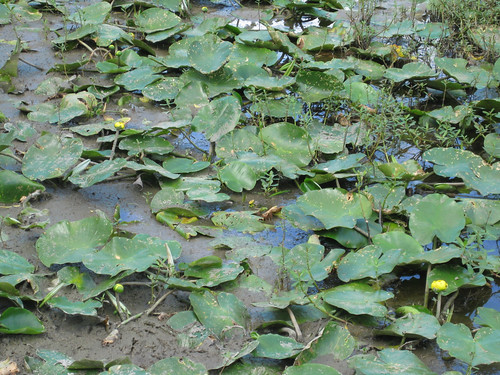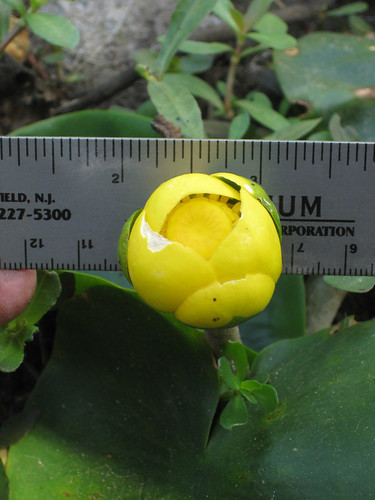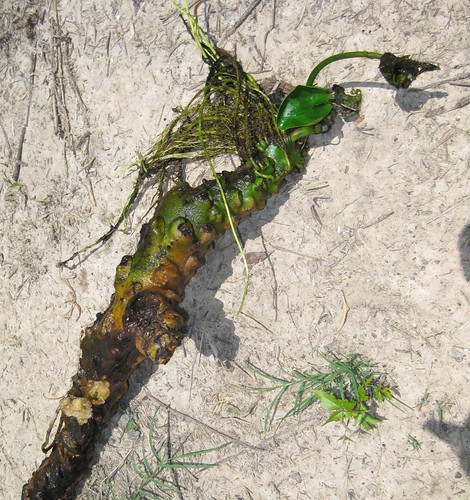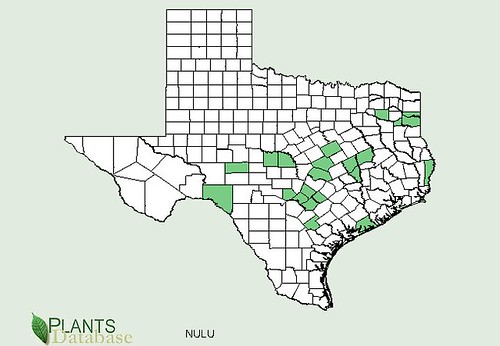Abundance: uncommon
What: seeds
How: seeds-raw or roasted
Where: still or slow-moving water
When: seeds-August to September
Nutritional Value: protein
Dangers: root are too bitter and nasty to eat, regardless of what you may have read in a book.
Spatterdock in drying pond. Normally they would be in water rather than mud.

Spatterdock flower

Root tuber and young leaves. Peterson's Guide to Wild Edibles is wrong, these suck!!

Another picture of the tuber and more mature leaves.

Texas distribution, attributed to U. S. Department of Agriculture. The marked counties are guidelines only. Plants may appear in other counties, especially if used in landscaping.

North American distribution, attributed to U. S. Department of Agriculture.

Found in lakes, ponds, relatively slow-moving streams across North America, the lily pads and small, yellow flowers of Spatterdock are common sight. Many books on wilderness survival and edible wild plants talk about the rich source of life-saving calories to be found in the thick roots of Spatterdock...and if you've ever successfully eaten a Spatterdock root I tip my hat to you. I've never found any whose bitter taste didn't make me throw up. Seriously, don't bother trying to eat these tubers/roots!! Whatever other book you've read that says these are good food are lying to you!
The seeds formed in the flower-bodies aren't nearly as bitter and taste best roasted. Eat those.
Buy my book! Outdoor Adventure Guides Foraging covers 70 of North America's tastiest and easy to find wild edibles shown with the same big pictures as here on the Foraging Texas website.

